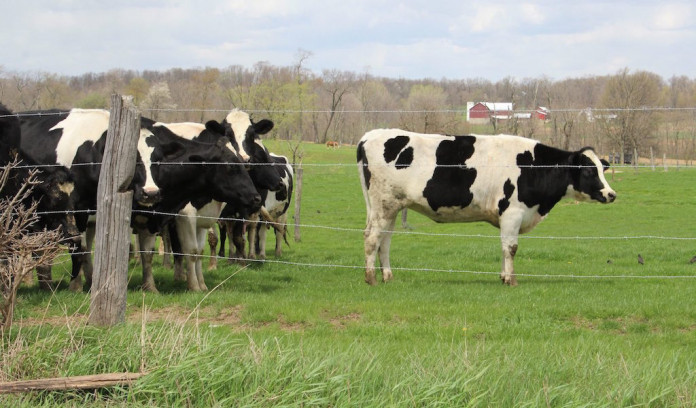Long before humans stepped in and tried to manage livestock’s grazing patterns, they naturally precision grazed with their 2- or 4-inch cutter bar roaming the range.
Today, we continue to look for better ways to manage our grazing operations to better match the amount and quality of forage growing on our farm to our livestock’s needs.
Some of the new technology being developed around the world includes aerial based pasture yield and quality monitoring, GPS synced pasture measurement tools and animal-based monitoring.
Monitoring pasture growth and livestock grazing patterns increases farm profitability through many channels such as weed control, forage yield improvements, better nutrient distribution and decreased erosion.
Unmanned aerial systems
One monitoring system that has been rapidly advancing in the last few years is the use of unmanned aerial systems to monitor pasture. Utilizing cameras mounted on the system allows us to monitor pasture yield, forage nutritional quality and plant fertilizer needs. These systems can also help us determine areas with weed control challenges and areas that may need reseeded.
It is not as simple as just flying the pasture to monitor quality; the first step is to have the right types of cameras and camera view angles on your system. Through using photo processing software, a multispectral camera combined with an RGB camera will allow for pasture monitoring. These images then must be calibrated through local ground truthing of yield estimates.
The best yield results come from measure plant height, quality and forage density. To do this, your images will need to be both a straight down surface view and more of a side view. This system is being developed in areas with mostly pure grass pasture and has many challenges with our mixed species pastures.
The high resolution of unmanned aerial systems imaging, though, will allow for machine learning to eventually help solve this problem through identification of plant species in your pastures. This will allow for various forage yield calibration curves to be used throughout the pasture based on plant species present in different areas.
Using information on plant species and biomass is showing an ability to accurately estimate both forage crude protein and digestibility. Using unmanned aerial system mapping to monitor pasture growth and determine areas for fertilizer application have shown on average a 30% savings in nitrogen needs. The site-specific application on nitrogen based on unmanned aerial systems sensor monitoring has increased nitrogen use efficiency by 368%.
C-Dax pasture meter
Another system coming from New Zealand to monitor pastures is the C-Dax pasture meter, which is available in both an autonomous version and a pull type version.
The pull type version behind an ATV can cover 168 ac/hr. This system uses GPS and onboard sensors to map pasture yield like a combine yield monitor.
The autonomous version will traverse your pastures based on the path you draw on a computer user interface without any daily intervention.
Micro-sonic rising plate meter
One other system that can be used to monitor pasture yield with more precision than previously available tools is a Micro-sonic rising plate meter. In many ways these are like the older ratcheting rising plate meters, but these are synced to your cell phone and use GPS to record where each measurement is taken.
The micro-sonic rise plate meter is slightly more accurate than the ratcheting plate meter and allows for easier calibration for your own pasture mixes. The GPS also allows you to return to the same locations to monitor seasonal variation in various areas of your pasture.
By monitoring pasture yield, you can do a better job of matching your livestock’s needs to your pastures ability to produce forage. The power of data on pasture yield and quality can improve your operations profitability.
Through better monitoring of pasture growth, you are better able to utilize your forage production, often decreasing the amount of baled forage you need. Your livestock’s performance can also often be improved through better grass monitoring to know when supplemental nutrition is needed.
Pasture monitoring is also a useful tool for determining how new management practices affect your pasture.
Some of the management practices you may want to monitor to determine effects on your farm include nitrogen application, liming, phosphorous, potassium application, reseeding, and various species selection for your pastures.













